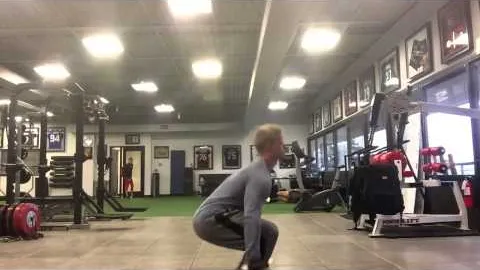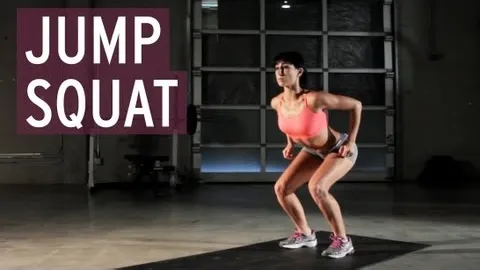






Are you looking to take your fitness routine to the next level? If so, incorporating squat jump exercises into your training regimen may be the key to unlocking explosive power and strength gains. Squat jumps are a highly effective plyometric exercise that targets several major muscle groups, including the quadriceps, hamstrings, glutes, and calves, while also engaging your core for stability and balance.
Squat jumps, also known as squat thrusts or leap squats, combine the squatting motion with an explosive jump. The exercise starts in a squatting position, with your feet shoulder-width apart and your knees bent at a 90-degree angle. From this position, you explosively jump off the ground, extending your hips, knees, and ankles at the same time. As you land, you immediately lower back into the starting squat position to complete one rep.
Squat jumps are a fantastic exercise for improving explosive power. By engaging the lower body muscles in an explosive jump, you stimulate fast-twitch muscle fibers, which are responsible for generating quick and powerful movements. This not only helps increase your vertical jump but also translates to better performance in various sports, such as basketball, volleyball, and track and field events.
One of the primary benefits of squat jumps is their ability to build leg strength. As a compound exercise, squat jumps engage multiple muscle groups simultaneously, including the quadriceps, hamstrings, glutes, and calves. These muscles are crucial for generating force, whether it's for jumping, running, or lifting heavy weights. By consistently performing squat jumps, you can develop stronger and more resilient leg muscles, leading to improved overall lower body strength.
Squat jumps also require significant engagement of the core muscles for stability and balance. As you explode upwards, your core muscles, including the abdominals, obliques, and lower back, contract to maintain a stable trunk position. This not only helps improve your balance during the exercise but also carries over to other activities that require core stability, such as running, jumping, and athletic movements.
If weight loss is one of your goals, squat jumps can be a valuable addition to your fitness routine. This plyometric exercise is highly demanding and requires a significant amount of energy expenditure. By incorporating squat jumps into your workout, you can elevate your heart rate, increase your metabolic rate, and burn more calories both during and after the exercise session. This can support your weight loss efforts and contribute to a leaner physique.
To perform squat jumps safely and effectively, follow these step-by-step instructions:
To maximize the benefits of squat jumps, incorporate them into your existing workout routine a few times per week. Here's an example of how you can integrate squat jumps into a leg-focused workout:
Incorporating squat jumps into your workout routine can yield impressive results in terms of explosive power, leg strength, core stability, and calorie burning. Whether you're an athlete looking to enhance your performance or an individual aiming for weight loss and improved fitness, squat jumps are an excellent addition to your exercise arsenal. Remember to start with proper form, and gradually increase the difficulty and intensity as your strength and technique improve. With consistent practice and dedication, you'll experience the benefits of squat jumps and see noticeable improvements in your overall strength and power output.
If you're looking for a gym, fitness club or yoga studio, you've come to the right place.
You can find information about gyms in your area. Browse catalog of gyms and find gyms with classes which are you looking for.
On gym page you can find simple information like address, phone or website. You can find list of available classes. You can check availability of personal training or small group classes. On place page you can also see information about open hours.
You can find gyms near you with amenities, courts, studios and equipments.
Use our map to find gym at your city or district.
In Gym Navigator you can find list of exercises with movies for many body parts.
You can browse exercises catalog and find exercises the best of you.
You can also find exercises grouped into workout plans, which you can use to improve you body. Each routine show you exercises one by one and give you possibility to count you progress and count down rest time.